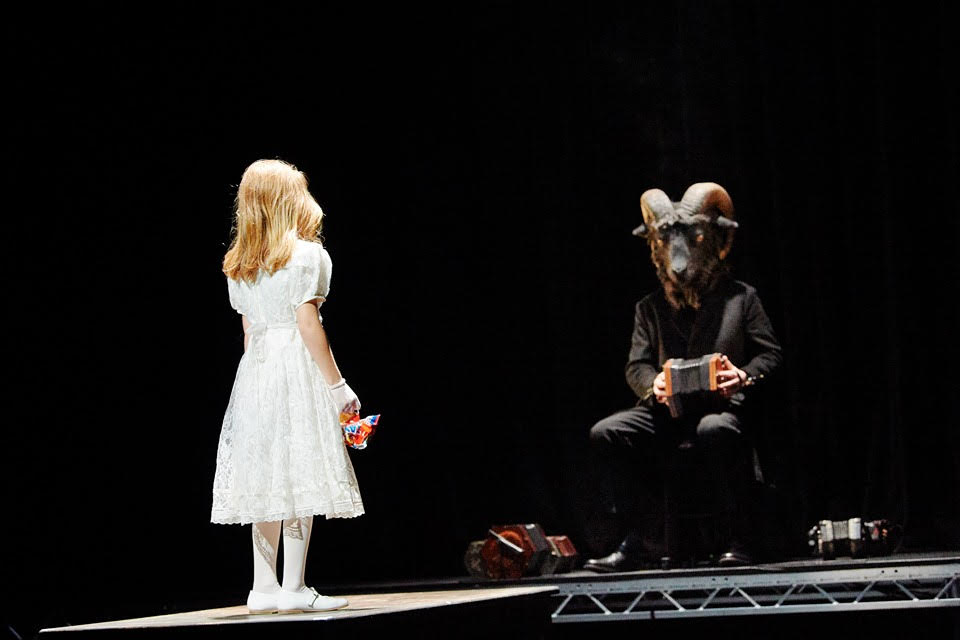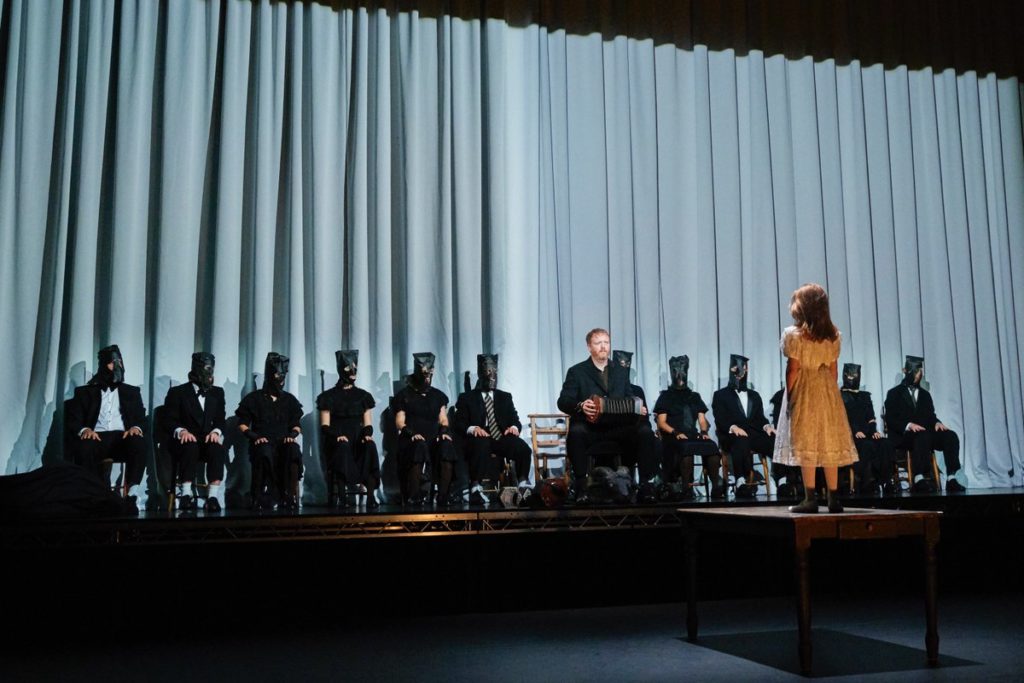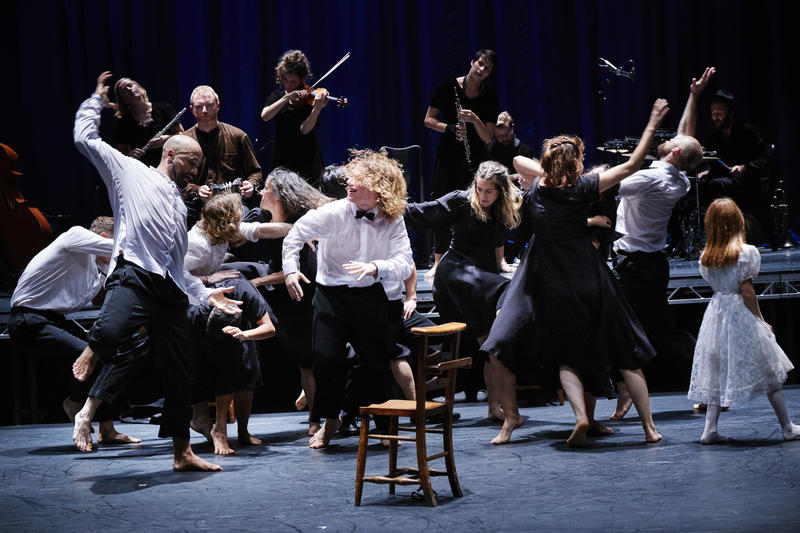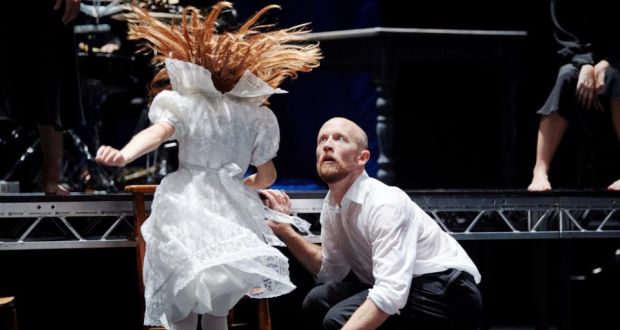1. Mám: Mountain pass. Mám Trasna fadó, The Old Pass.
2. Mám: Yoke. Faoi mhám an pheaca, under the yoke of sin. 2. Lit: Obligation, duty, function.
3. Mám: Handful. ~ mhilseán, of sweets. Scaipeann sé ina mhámanna é, he throws it away in handfuls.
Foclóir Gaeilge-Béarla, Ó Dónaill
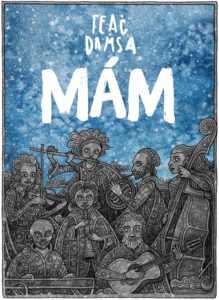
The Irish word “mám” is a slippery one. It does not exist in most Irish dictionaries, appearing only in Ó Dónaill’s 1977 Foclóir Gaeilge-Béarla. It comes from an oral tradition in which spelling, and indeed linguistic signification in the broadest sense, is not standardized but contextual and relative. It is a strange word, but perhaps a stranger title; acclaimed Irish choreographer Michael Keegan-Dolan reappropriated this peculiar word for the title of his newest piece, Mám, developed in collaboration with twelve international dancers from the Teaċ Daṁsa company, the virtuoso, Irish traditional concertina player Cormac Begley, and the European classical, contemporary collective, stargaze.
Within the first few weeks of my arrival in Dublin, I had the opportunity to see Mám. I enter the auditorium to find a haunting image: a young girl in a communion dress lying on a wooden table. Above her looms a large goat-headed man, slowly expanding and contracting the bellows of a concertina. The rest of the stage is empty. The girl crawls to a drawer on one end of the table to reveal a bag of crisps, which she promptly devours. The curtain behind the goat-headed concertina-player collapses revealing twelve dancers in black suits, their faces covered with black paper bags.
Nothing could have prepared me for the explosive phantasmagoria that would be unleashed before me over the course of the next 90 minutes – an experience itself as perplexing and ungraspable as the word mám for which it is named. This young girl bears witness to the wild, ritualistic fever-dream of the adult world collapsing around her, adults who seem violently entangled in an urgent need to recollect, recall, or regain something that has been lost but appear at the same time as apparitions of the future. Over and over again, the mythological collides with the mundane, the holy with the profane. The image of this girl standing down a goat-headed concertina virtuoso, much like the chill of a wet Irish morning, has worked its way inescapably into my bones.
Teaċ Daṁsa, meaning “House of Dance” in classical Irish, was founded in 2016 in an attempt to forge deeper connections with the traditions, language, and music of Ireland. The company’s work is deeply connected to Irish mythology, untangling the complex cultural heritage that makes up contemporary Irish identity. They combine traditional forms of Irish music and dance with the contemporary European experimental tradition of Dance-Theatre — the result is not only a captivating excavation of Irish culture but a ferociously entertaining piece of theatre.
Above all, Dolan his dancers understand the messiness of what it means to be Irish — or perhaps, what they really understand is the messiness of what it means to be alive. Somehow, out of a hyperspecific examination of the iconography and cultural/artistic heritage of Ireland, Mám achieves something universal. In many ways, I have found that what is most remarkable about Irish culture is the incredible closeness of the mythological and the mundane. Political, artistic, cultural, religious, and social mythologies still run deep in Ireland — a current that Teaċ Daṁsa not only expresses with power and precision but truly revels in.
As an American encountering Ireland for the first time, I could have had no better reception than the work Teaċ Daṁsa. Their work allowed me to let go of preconceived notions of Irishness and understand the complexity of the cultural landscape that I am entering into. I carry Mám in the back of my mind wherever in Ireland I might find myself, and every day I find myself lucky enough to be in the position of that little girl: an observer awe-struck by something far greater than myself.

